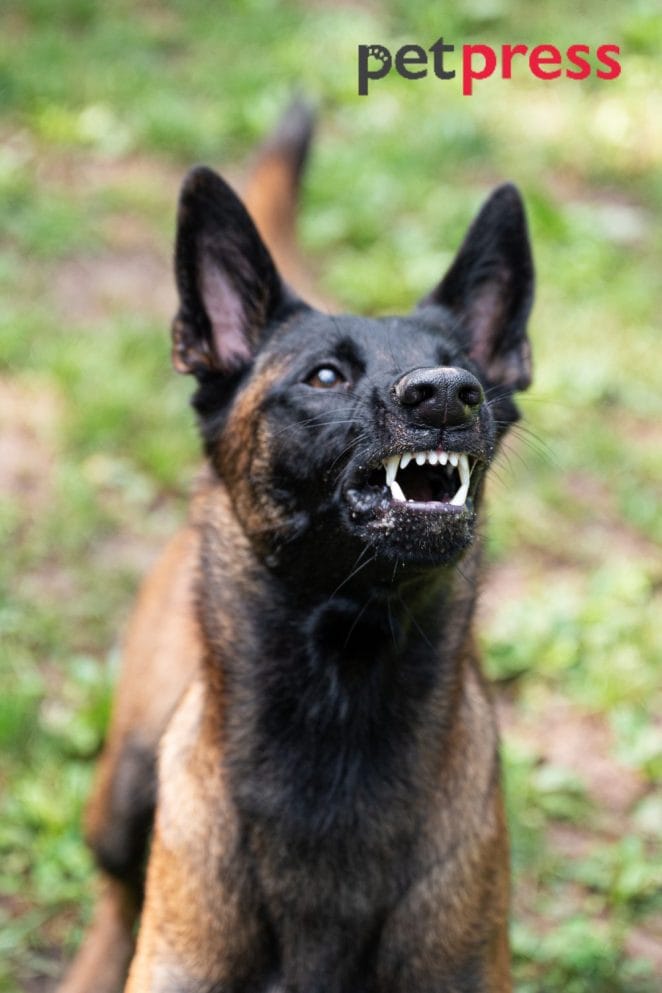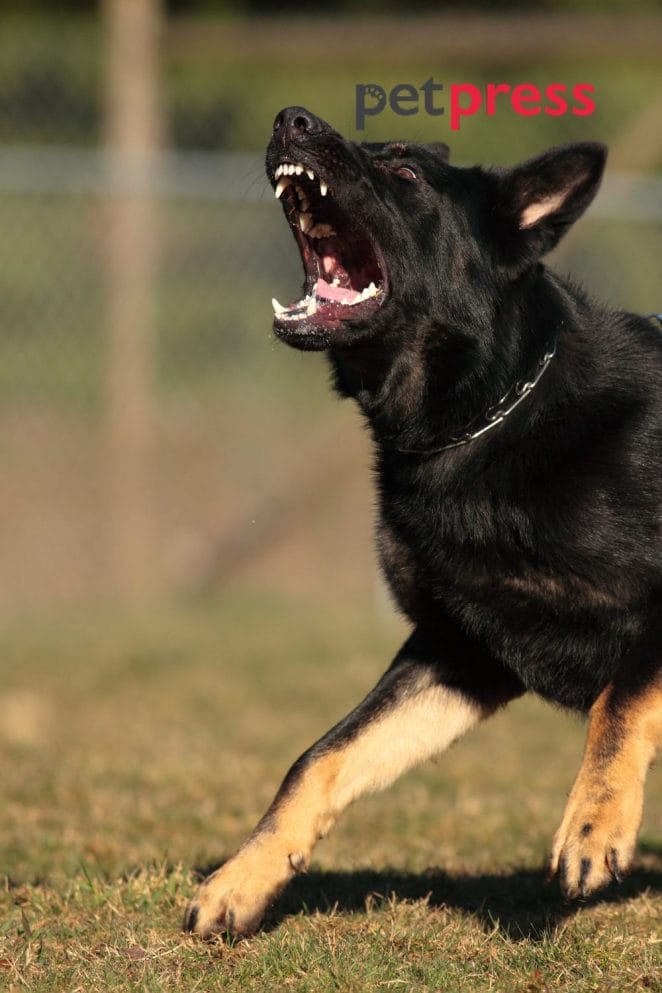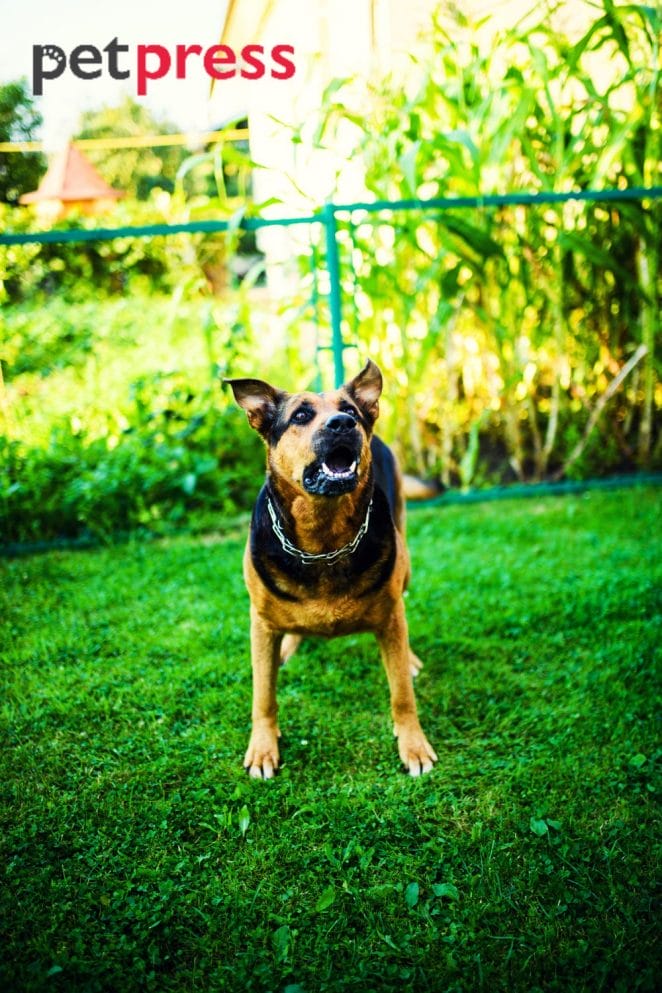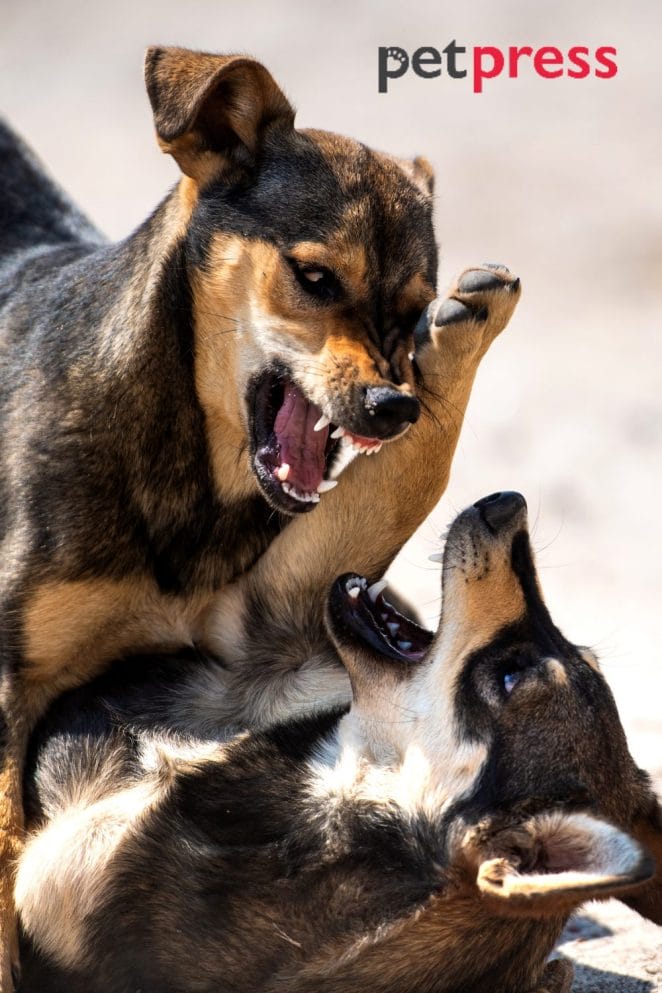
Welcoming a dog into your home is a joyful experience, yet it spawns an array of trials. One such challenge is dominance aggression in dogs, a behavior that can concern both the pet and the owner.
This comprehensive guide will equip you with invaluable insights and practical tips, enabling you to cultivate a harmonious and joyful bond with your dog. So, let’s embark on this enlightening and captivating journey together!
Understanding Dominance Aggression in Dogs
Dominance aggression is a behavioral problem when a dog tries to assert dominance over humans or other animals. This behavior can take different forms, such as growling, snarling, or biting. It is crucial to identify the signs early on to prevent potential harm.
Dominance aggression in dogs isn’t some canine conspiracy to overthrow humans and rule the world—though that would make for an interesting plot twist in a dog-centered sci-fi flick! Jokes aside, this behavior is expected and rooted in their pack-oriented nature.
In their natural environment, dogs utilize aggression to establish dominance within their pack hierarchy. However, in a domestic setting, certain dogs may display this behavior as a misguided attempt to assert their ‘leadership’ over their human family members.
It is crucial to keep in mind that each dog is one-of-a-kind. While certain breeds may have a higher tendency for dominance aggression, individual personality traits also play a significant role.
Therefore, if your beloved companion displays signs of dominance aggression, there’s no need to rush to order dog-sized crowns.

Recognizing the Signs
Spotting dominance aggression involves observing specific behaviors. These may include:
- Intense Staring: A fixed, unwavering gaze is a clear sign of a dog trying to establish dominance.
- Growling and Snarling: Audible warnings that the dog feels threatened or challenged.
- Guarding Resources: This could be food, toys, or even a specific territory.
- Posturing: Stiffening of the body, raised hackles, and a rigid tail.
Possible Causes
Several factors can contribute to dominance aggression:
- Lack of Socialization: Dogs that have yet to be adequately exposed to different environments and situations may struggle with dominance issues.
- Inconsistent Training: Mixed messages from different family members can confuse a dog, leading to behavioral problems.
- Unaddressed Health Issues: Pain or discomfort can cause a dog to act out aggressively.
The danger of dog aggression can have significant consequences. It can cause fear in humans, potentially resulting in the unfortunate decision to euthanize the animal. It’s a sad reality highlighting the importance of collective efforts to prevent such situations.
By promoting responsible ownership, proper training, and proactive measures, we can ensure the safety and well-being of both humans and animals in our communities.

10 Ways to Address Dominance Aggression
Addressing dominance aggression in dogs requires patience, consistency, and a deep understanding of canine behavior. In the subsequent section, we will explore ten effective strategies to help you manage this challenging behavior and bring back the joy in your relationship with your furry pal.
- Consistent Training: Implement a consistent training regimen. Ensure everyone in the household is on the same page to avoid confusing your dog with mixed signals.
- Positive Reinforcement: Reward good behavior with treats, praises, or playtime. This helps your dog understand what behaviors are acceptable.
- Regular Exercise: Regular physical exercise is crucial. It helps channel energy positively, reducing the likelihood of dominant behavior.
- Socialization: Expose your dog to various environments, people, and other animals. This helps them become more adaptable and less anxious in new situations.
- Controlled Feeding: Implement controlled feeding times instead of leaving food out all day. This establishes you as the one in control of resources.
- Professional Help: Seek help from a professional dog trainer or a behaviorist if the dominant behavior persists. They can provide personalized strategies for your dog.
- Health Check-ups: Regular vet visits can ensure there are no underlying health issues causing the aggressive behavior.
- Respect Your Dog’s Warnings: If your dog shows discomfort, respect their space. It can prevent an escalation into aggressive behavior.
- Avoid Punishment: Aggressive behaviors should not be met with aggression. It can exacerbate the problem. Instead, they use non-confrontational methods to correct their behaviors.
- Patience and Love: Changing a dog’s behavior takes time. Be patient, and provide your dog with love and understanding along the way. Remember, it’s not a dominance battle but a journey towards a harmonious relationship.

The Benefits of Managing Dog Aggression
Managing dog aggression, particularly dominance aggression, offers several benefits beyond avoiding the occasional nip. Firstly, it fosters a harmonious living environment where you and your furry companion can enjoy each other’s company without tension or fear.
Secondly, it safeguards the well-being of others who interact with your dog, ensuring their safety and the overall welfare of your community. Learn how to manage aggression for a happier, safer environment.
Properly managing dominance aggression can significantly improve your dog’s mental health. It reduces stress and anxiety, often associated with aggressive behavior, resulting in happier and more relaxed dogs.
Addressing dominance aggression promotes responsible pet ownership, sets a positive example for others, and contributes to a broader understanding of canine behavior. Well-behaved dogs bring joy and challenge stereotypes, fostering a more loving and compassionate society for all animals.

FAQs
What is dominance aggression in dogs?
Dominance aggression in dogs is a behavioral issue where a dog attempts to assert dominance over humans or other animals. This may be displayed through growling, snarling, or biting.
What are the signs of dominance aggression in dogs?
Signs of dominance aggression include:
- Intense staring.
- Growling and snarling.
- Resource guarding (like food or toys).
- Posturing (stiffening of the body, raised hackles, and a rigid tail).
What are some possible causes of dominance aggression in dogs?
Possible causes of dominance aggression include lack of socialization, inconsistent training, and unaddressed health issues causing discomfort or pain.
How can I address dominance aggression in my dog?
To address dominance aggression, you can implement the following:
- consistent training,
- use positive reinforcement,
- ensure regular exercise,
- promote socialization,
- establish controlled feeding times,
- seek professional help if needed,
- schedule regular vet visits,
- respect your dog’s warnings,
- avoid punishment, and
- be patient and loving in the process.
Why is it essential to address dominance aggression in dogs?
Addressing dominance aggression is crucial for a harmonious and safe living environment. It prevents potential harm to humans and animals and fosters a loving relationship with your furry companion.
Conclusion
Understanding and addressing dominance aggression in dogs is crucial for a harmonious and safe living environment. You can nurture a loving relationship with your furry companion by recognizing the signs, implementing effective training techniques, and seeking professional help when needed.



GIPHY App Key not set. Please check settings